- Screen Colours:
- Normal
- Black & Yellow
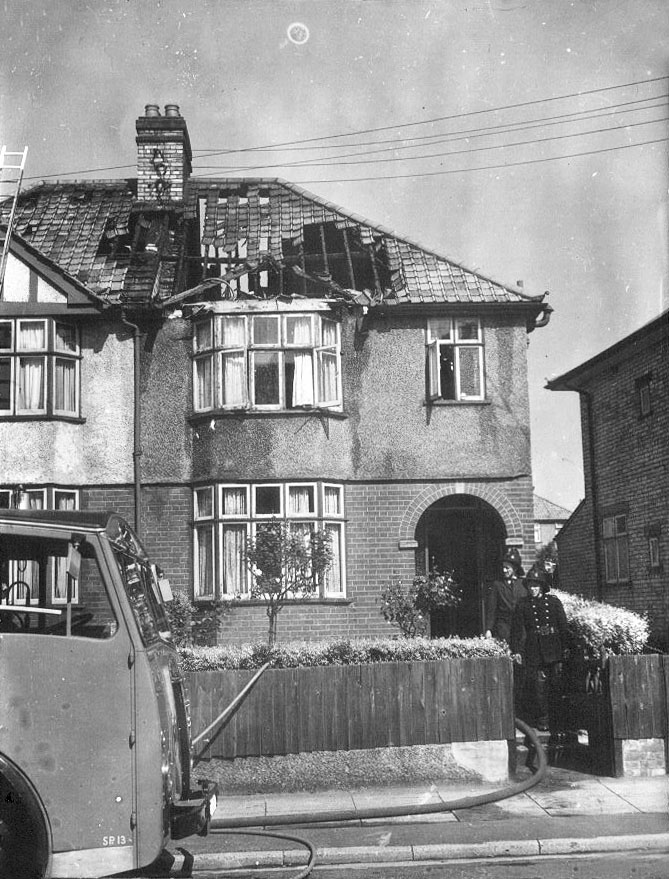 Ipswich Corporation established the first public fire service for our town in 1875 – the Ipswich Fire Brigade. In 1899 it acquired purpose-built premises in Bond Street and this building, remembered by many of us, was the first and best loved workplace of our speaker, John Harvey. He described the necessary routine of cleaning and checking the equipment, drills and crucially the Bond Street bell call-out. Ipswich, being a port, is no stranger to large fires – among the risks in the 1950s were a power station, an ammonium nitrate fertilizer plant, a gas works, flour mills, oil/chemical storage tanks and maltings (the ‘best customers’ according to John).
Ipswich Corporation established the first public fire service for our town in 1875 – the Ipswich Fire Brigade. In 1899 it acquired purpose-built premises in Bond Street and this building, remembered by many of us, was the first and best loved workplace of our speaker, John Harvey. He described the necessary routine of cleaning and checking the equipment, drills and crucially the Bond Street bell call-out. Ipswich, being a port, is no stranger to large fires – among the risks in the 1950s were a power station, an ammonium nitrate fertilizer plant, a gas works, flour mills, oil/chemical storage tanks and maltings (the ‘best customers’ according to John).
And it seems that fire-watching has been the hobby of Ipswich people through the years. John quoted a report of a fire at R & W Paul’s in 1911 which was ‘watched by thousands of people’ and recounted his own experience at a fire at their Felaw Street Maltings early in his career. At Bond Street they had actually smelled the smoke just before the bell sounded and in this case John was the one who climbed the 100 foot turntable ladder to operate the high pressure water jet. He noticed a crowd of people on the far side of the New Cut watching the proceedings, with an ice cream van doing a roaring trade!
The Bond Street Fire Station, described by Graham Smith in our April 2016 Newsletter, was demolished in 1984. The houses opposite still exist, though not the field behind them where the horses for the 19th century fire appliances were thought to have been kept. One of the early motorised appliances acquired by the Ipswich Fire Brigade was a 1938 Leyland Cub fire engine. It saw service in London in World War II when the Ipswich Fire Brigade lent a hand at the docks and oil refineries there. This vehicle, preserved in the Ipswich Transport Museum*, was still in use by John and his fellow fire officers for training in the 1950/60s.
John told many stories of close shaves, such as the family in Shakespeare Road who managed to escape a gas explosion using a knotted sheet to descend from a first floor window – and also some distressing accounts of fatalities, though mercifully these have been few owing in no small part to the courage of our firefighters. The tale of the ‘saving of Ipswich’ illustrates this point. A tanker lorry delivering ammonia at the dock had a fire in its insulation under the outer skin – and it was right next to Fisons ammonium nitrate (an explosive!) store. John and a fellow officer put out the fire wielding their axes and a water hose. If they hadn’t – who knows? In a similar incident in Texas City USA, which was not controlled, the explosion killed 567 people.
*As well as the Leyland Cub mentioned above, Ipswich Transport Museum has on display one of the big Dennis pump escape fire engines used in the dockside fires – well worth a visit.
https://www.ipswichtransportmuseum.co.uk/
Caroline Markham
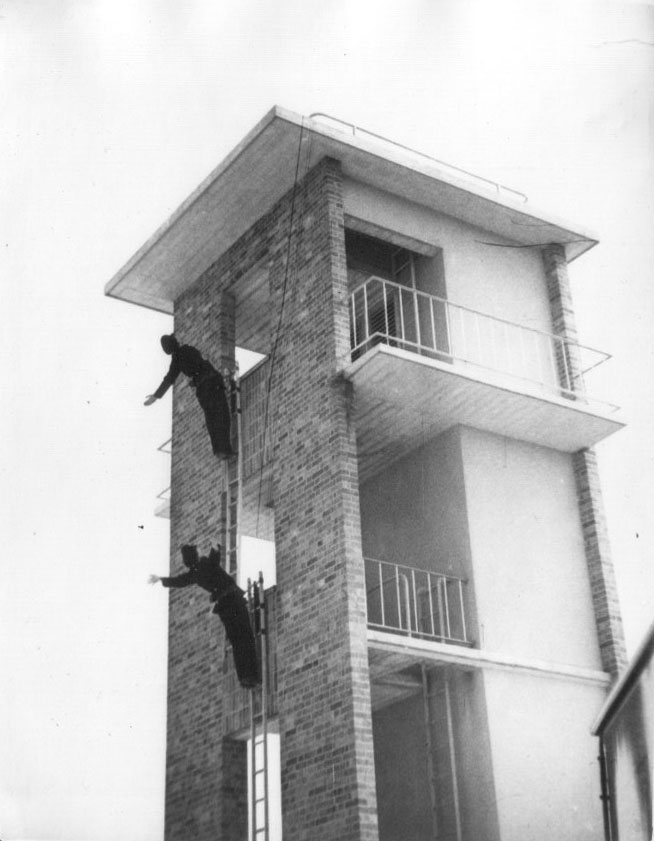
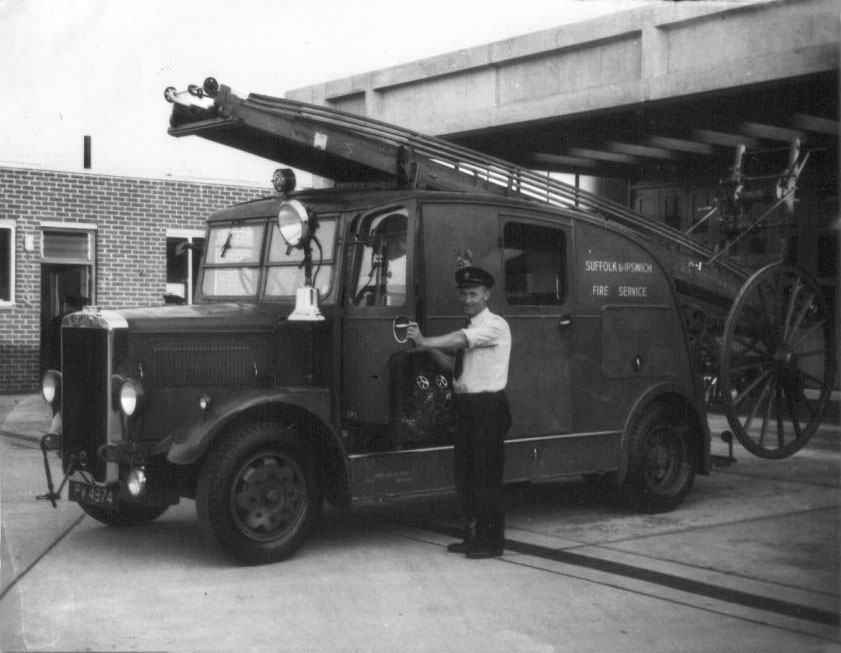
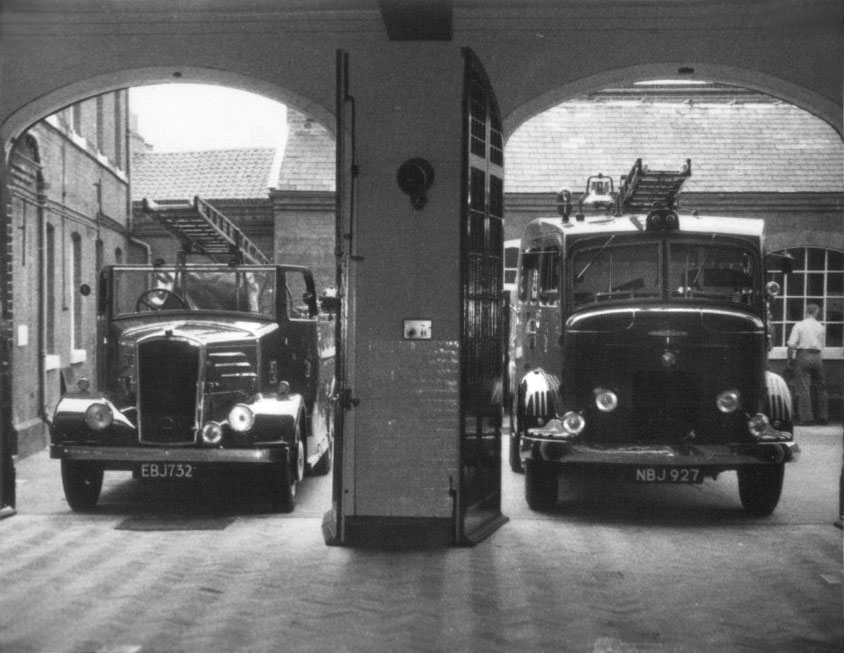
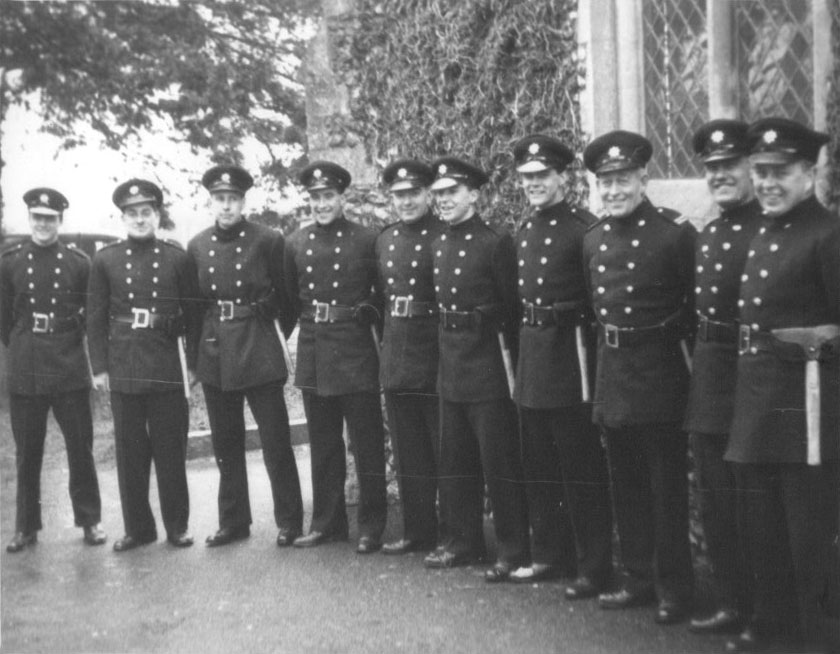
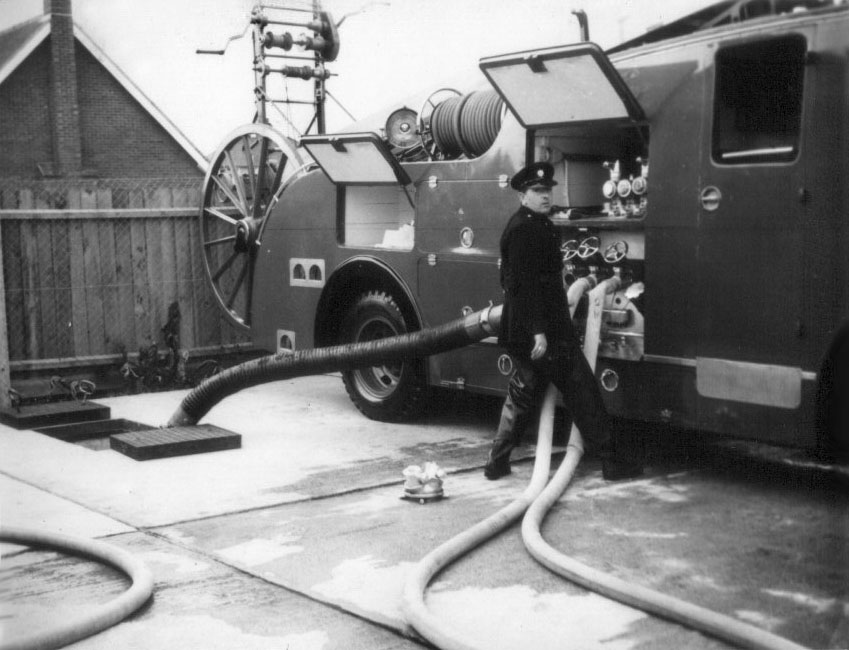
A selection of photographs from the Harvey album of Fire Service memories on the Ipswich Society’s Image Archive. From top: Hook ladder drill; 1936 Leyland pump escape, in 1964; Appliances at Bond Street Fire Station, 1964; Guard of honour at a colleague’s wedding; Deep lift test (Pump escape), 1964.
https://www.flickr.com/photos/ipsoc/albums